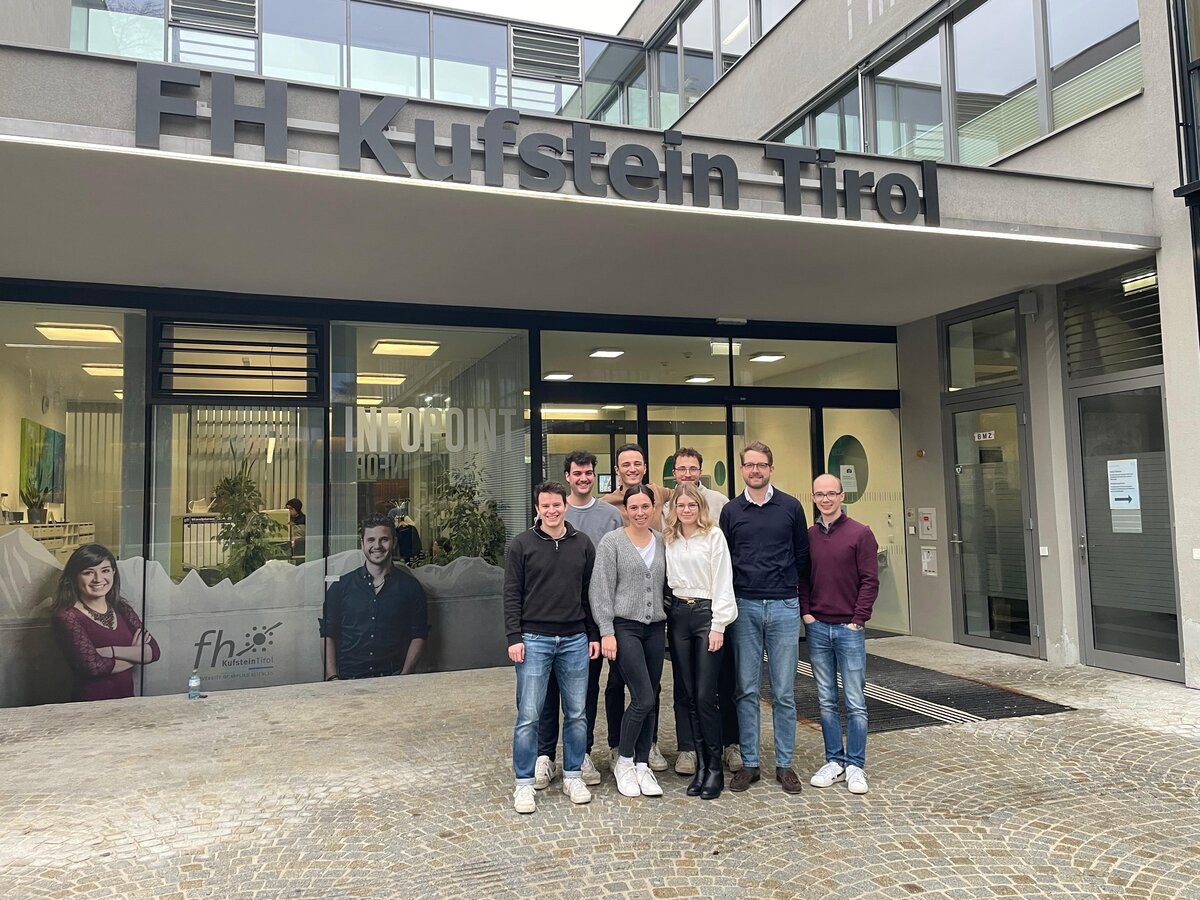WHEN ELECTRICITY BECOMES VISIBLE: HOW TO SAVE ENERGY
- 07.08.2025
- News Study Program

The University of Applied Sciences Kufstein Tirol student team involved in the development of the tool: Felix Geiger, Ilyas Bouabe, Leon Gölz, Lisanne Haug, Romana Gruber, Finn Dünzer, Maximilian Haller and Lukas Gamper (from left to right).
How can electricity be used more intelligently - and thus save money and energy in a simple way? Students at the University of Applied Sciences Kufstein Tirol have developed a tool that makes energy communities more transparent through visual data analyses. A project with a big impact.
As part of a practical project, nine students from the Energy & Sustainability Management Master's degree program developed an analysis and visualisation tool for electricity data together with ECO Neuhauser GmbH. Under the name EEG SYNC, it shows how self-generated energy can be optimally utilised in energy communities - in a comprehensible and easy-to-use format.
The special feature of the tool: It is easy to use, free of charge and can be used independently of the operating system. The target group is private individuals and members of energy communities who want to get a clear overview of their electricity consumption and their own use of generated energy - without any prior technical knowledge.
"It was important to us that EEG SYNC also works for non-technicians," explains project supervisor Prof. (FH) Dr Robert Fröhler. The application runs via the Thonny Editor, a beginner's tool for Python, and can be set up with just a few clicks. Data - for example from smart meters - is imported via a CSV file. An automatic data connection is not currently planned, but could be implemented in a next step.
MAKING LOAD SHIFTING POTENTIAL VISIBLE
With EEG SYNC, electricity generation and consumption can be analysed for each metering point. The visualisation of so-called load shifting potentials is particularly helpful - i.e. the question of when electricity consumption can be better aligned with the time of generation. The application not only shows this visually, but also in figures: Users can see how much of their own electricity was actually used and what was fed into the grid - and where a shift would be worthwhile.
TEAMWORK WITH CLEAR ROLES
The project team consisted of nine students who worked in three groups: for programming, data analysis and visualisation. The groups regularly exchanged information, making the tool more user-friendly step by step. The concept was finally presented as part of the project expo at the University of Applied Sciences Kufstein Tirol - where it met with great interest.
"The solution is deliberately kept simple so that as many people as possible can benefit from it," says Fröhler. "At the same time, it has been professionally planned, programmed and documented - a great example of how much innovative power there is in our practical projects."
OPEN FOR THE FUTURE
EEG SYNC is currently available as a prototype. Further development as a web app or mobile application is conceivable - however, this would involve greater technical and human resources. The tool is currently available as open source and can be customised.
With EEG SYNC, the students are helping to make energy communities more comprehensible and their energy flows more sustainable and efficient - a goal that could not be more topical.
